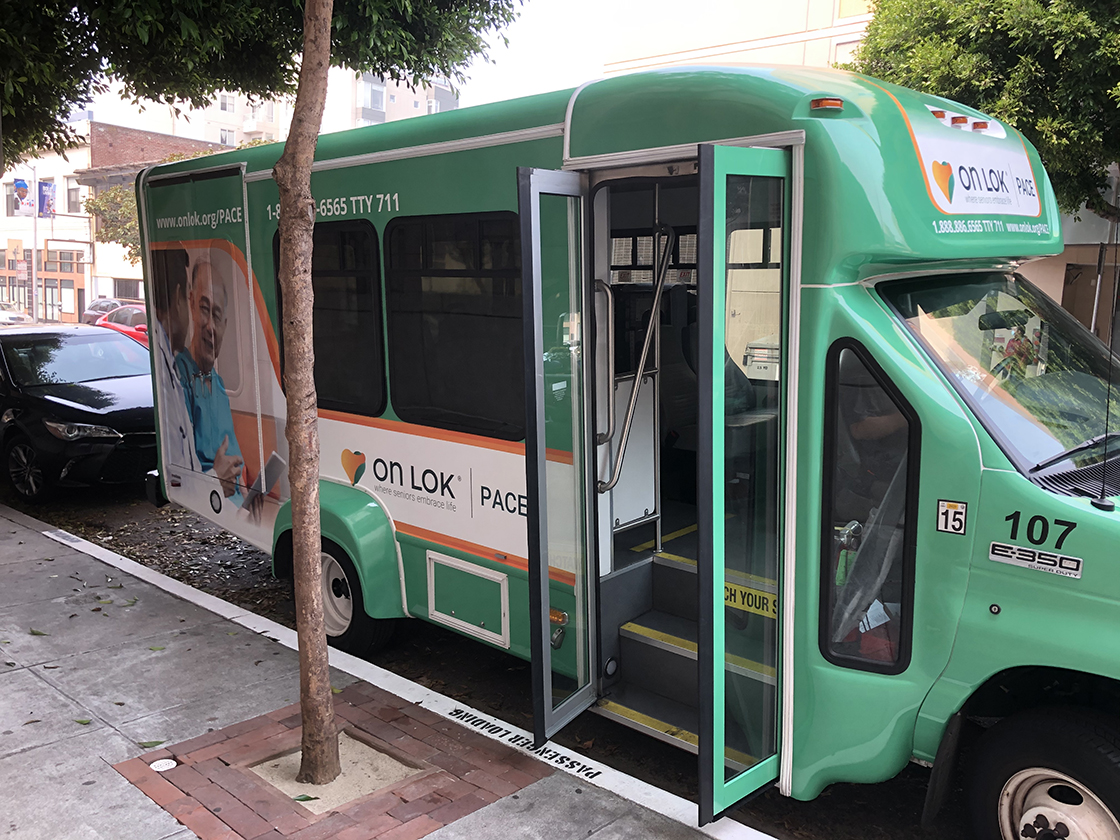A study by Transportation for America found that nearly 20 percent of people ages 75-79 use ride-sharing as their primary means of travel. This number rises to 40 percent for respondents over 85. Also, according to an analysis of the National Household Travel Survey by AARP’s Public Policy Institute, more than 20 percent of Americans age 65 and older do not drive. Soon, even more people are expected to stop driving as the country’s 75 million baby boomers permanently hang their car keys.
Access to transportation on a regular basis can mean the difference between a senior successfully remaining in his/her home and community or premature placement in a senior facility.
In the On Lok PACE program, participants receive free daily transportation from their homes to their PACE Center and back. Free transportation is also provided to and from to any doctor or medical facility visits. On Lok PACE drivers are specially trained to assist elderly passengers, including those in wheelchairs or those who have limited mobility. Drivers develop personal relationships with each passenger and are able to alert direct care providers to any changes in a participant’s mood or health.
Transportation Innovations
For years, the On Lok PACE program had been exploring opportunities to incorporate green technologies into its growing fleet. The implementation of a Lightning Hybrid System (LHS) presents an opportunity for the On Lok PACE program to incorporate eco-friendly technology in its vehicles. Among the benefits of LHS include:
LHS hydraulic hybrid systems can regenerate 70% of the energy captured in braking events as compared to 30% for battery hybrid systems (like the system in the Toyota Prius, for example).
Fuel cost savings: Projected 25% better fuel efficiency.
Reduced carbon footprint: 25% reduction in CO2 emissions and more than 50% reduction in NOx emissions (smog).
Safety: LHS is a parallel hybrid system. If it malfunctions, vehicles still operate safely with the vehicle’s conventional system.
On Lok PACE program currently operates two LHS vans which were put into operation on September 10, 2015 in San Jose. They’re utilized on routes projected to yield the highest cost savings. Two more LHS systems are earmarked for purchase during the current fiscal year. If the expected results are achieved, several options will be explored in proceeding with future purchases, including the feasibility of retrofitting the system in current vehicles in the fleet.
